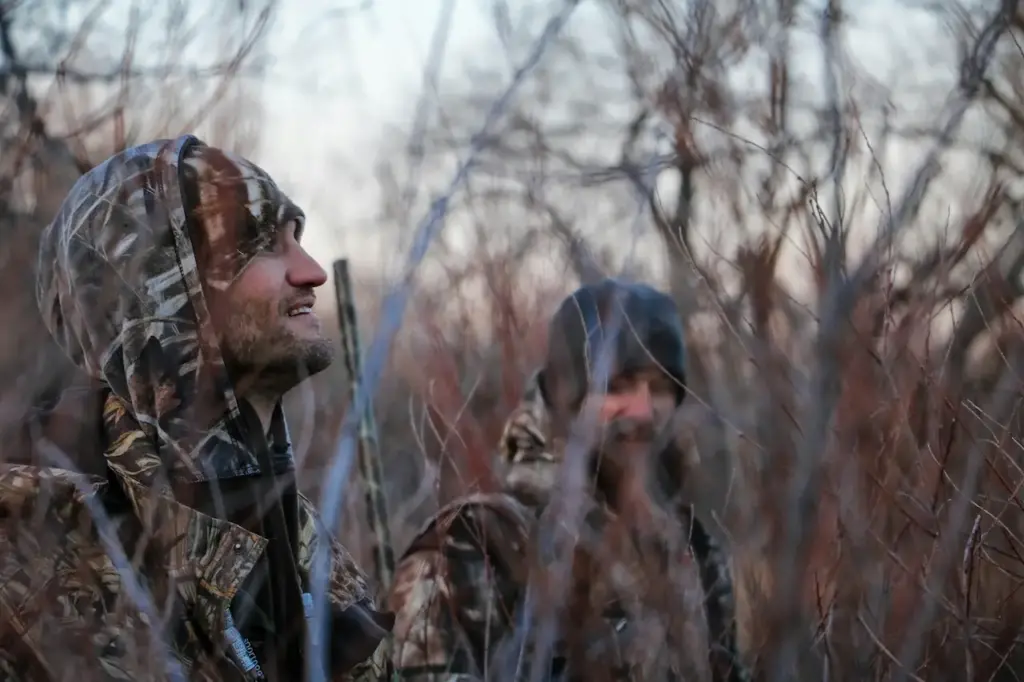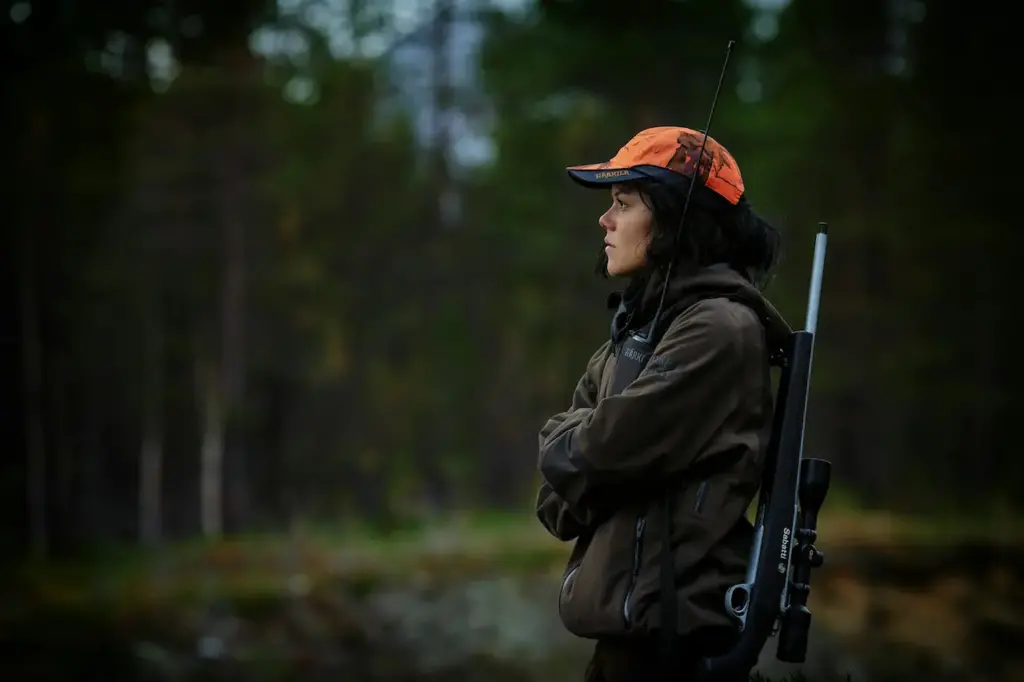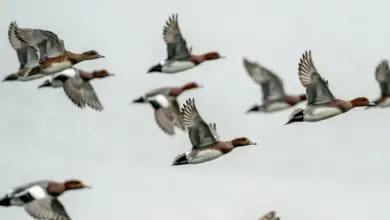Want to learn about duck hunting for beginners? This guide does not provide a detailed step-by-step hunting manual, but rather a solid foundation for waterfowl hunters by distilling a vast amount of information, techniques and skills down to four main principles. These principles help new hunters to organize ideas, tips and suggestions from different sources into a coherent structure, making them more relatable and usable.
Waterfowlers with experience may have different opinions about the details. However, they will agree that these principles are helpful for new hunters who want to begin their waterfowl hunt. Please feel free to add any refinements you may have in the comments.

Duck Hunting for Beginners & Location
Duck hunting is all about location. You can’t hunt ducks from your couch and you can’t hunt ducks in a park. It’s actually the most crucial part! You won’t kill ducks if they are not within shotgun distance. So, do all you can to get to where the ducks are.
It takes time and effort to consistently achieve success. The key to finding the best hunting areas is learning about waterfowl biology and their habits. Waterfowl migrate in North America and they follow four main routes, known as flyways. These are the Pacific Coast Flyway, the Central Flyway, the Mississippi Flyway, and the Atlantic Coast Flyway. Waterfowl migrate south in winter to find warmer weather and food, and then return north in spring, nesting in the marshes in Canada and northern US. Waterfowl tend to be more abundant and dense near the center of these flyways.
Details become important once you have chosen your flyway. Waterfowl are attracted to water sources such as rivers, streams and lakes. They also prefer marshes, swamps and other wetlands. Waterfowl also use dry fields as food sources, particularly agricultural fields that have waste seeds on the ground. Start by researching common duck food plants in your area, focusing on aquatic plants or plants that grow in moist soil, such as smartweed, millet and wild celery. USGS weather and water data can be used to track trends in rain, flooding and water levels at local lakes, rivers and wetlands during the season. Note the water level needed to hunt certain areas. You can hunt wetland B when the water level is between 12-48 inches. However, it is too difficult to reach if water levels are higher, and too dry if they’re below 12 inches.
Pay attention to the weather conditions north of you. Also, pay attention the the snow and freeze lines. It’s a sign that birds will move southward when the water north of you begins to freeze. If it begins to snow north of you, and the snow doesn’t melt on the ground, it will cover food in fields. This will cause a southward movement. For bird watching, use binoculars to search for large groups of birds at dams, overlooks or boat ramps. Look for flocks landing in the afternoon. This is likely a roost. In the morning, track the birds to find out where they feed. This is likely the best place to hunt. You’ll spend at least two to three days scouting for each hunt. Your efforts will be rewarded. Your options will be more varied when you have a larger “library” of likely hunting locations.

Duck Hunting for Beginners & Concealment
The concealment of your presence, your hunting party, your dog, your boat, your blind and any other unnatural elements in your hunting area is part of the concealment. Ducks have good color perception and depth perception, just like other birds. They are able to see well and are able to assess their environment for dangers or anomalies.
Your person is the first and most obvious concealment element. Wear camouflage patterns and colors that are appropriate for the environment. Avoid wearing bright colors, reflective elements or clothing with high contrast. Wear a beanie or hat and a camouflage face mask.
You can hide yourself in natural structures. Use the natural vegetation in your immediate area to build blinds or hides. If you’re hunting in a cattail marsh, use cattails, not cornstalks. When hunting in a swamp with cypress trees, you should stand behind the cypress instead of building an grassy blind. When building blinds, avoid right angles, heavy contrasts and shadows. Create natural shapes by using uneven spacing. Make sure your boat is hidden or stored at a distance from the hunting area. Pick up any empty shells during the hunt and make sure decoy cords do not stick out of the water. The difference between getting skunked or shooting your limit can be made by concealing the shotgun shells.
Duck Hunting for Beginners & Motion
Ducks are able to move. Ducks move around. Duck decoys do not move, though, because they aren’t alive. It is important to create motion around your decoys as well as in your area. Motion is important because it makes your decoys more visible, which attracts birds from a distance. It also gives birds near your decoys confidence that the area around them is safe.
On calm days, it is important to create artificial motion. You can create motion in the simplest way possible.
- Splashing water: Create ripples by using your feet, boat paddles, rocking boats, or tree branches to mimic ducks moving and swimming. It also stirs sediment which indicates that ducks are eating.
- Jerk string: A long piece of rope with an anchor weight and bungee cord on one end is attached with several decoys. The decoys will appear to be alive by pulling the string backwards and forwards.
See prices on a jerk string here
Some other motion decoy designs are spinning wing decoys that mimic a duck flapping it’s wings as it lands, and silhouettes which give the illusion of moving. The majority of electronic motion decoys can be expensive and are not always legal. Beginners should therefore start with simple options, such as the jerk strings.

Duck Hunting for Beginners & Calling
It is easy to overestimate the importance of duck calling. Duck hunting doesn’t require a dog. While you should be able to call ducks and are well-concealed, the most important element of ducking is not having a dog. You can hunt ducks without a dog if you have done your scouting, are in the right place, have decoys that move, and are well concealed.
Calling is still an effective tool. It is a complex and nuanced art at its highest level. The best duck callers are able to read duck behavior and can communicate with live birds. Although it takes years to master the art, good results can still be achieved using basic tools and techniques.
The first duck call that new hunters should purchase is a six-in-one mallard drake whistling. The calls are kept on your neck by a call lanyard. The mallard hen call produces three basic sounds: A quack, a comeback/hail call, and an chuckle/feed. The quack is the most basic “calm and content” vocalization. The hail call is made up of a series of quacks to attract distant birds. The chuckle/feed calls mimic ducks eating. The drake whistling is used to mimic the male mallard duck.
With practice and experience, you will develop your own personal technique, sound, and tone. It is important to learn duck behavior, and how they respond to your call. Ducks that are heading your way require less calling than ducks passing by. You can use loud calls and quacks to attract ducks from a distance.
Tips to read before hunting: How To Shoot Down and Uphill
Duck Hunting For Beginners & Gun Choice
Is this for a novice duck hunter, or a new shooter? It makes a big difference. If you are a new shooter, a break-open single shot would be my choice. Side by side, or over and under. Beginners can keep their guns open until they are ready to shoot. This is for safety and comfort.
The Remington 870 is the best choice for intermediate shooters. It’s a pump-action gun that can only be accidentally fired once (no consolation if you are in the line of the fire).
Semi-autos may be the best gun for upland duck & bird hunting, but they should NEVER be used by a beginner.
The right shotgun for a duck hunter is a very important decision. All of these shotguns are excellent for all levels of hunters. These shotguns all have their own features and benefits. It’s important that you choose the one that suits your preferences and needs.
Consider factors like reliability, accuracy and durability when choosing a shotgun. You should also choose a gun that is easy to use and comfortable to hold, as it can affect your hunting experience. With the right skills and equipment, no matter what shotgun you select, you will have a successful duck hunting season.
Tips on cleaning after your trip: How To Clean A Pistol
Duck Hunting for Beginners Summary
To become a successful duck hunter, you must learn and refine techniques related to location and concealment, movement, and calling. Few hunters are able to master waterfowl hunting, which can be difficult. Learning to duck hunt can be a rewarding experience that will change your life. Waterfowl hunting is not the best place to start for beginners due to the equipment needed. However, it’s a great way to enjoy yourself and has a long-lasting effect.




